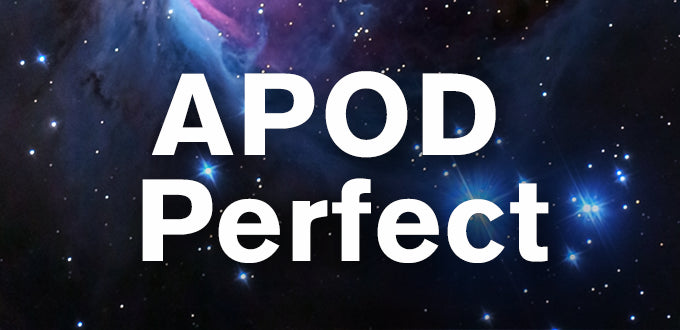RASA 8 Questions and Answers
December 27, 2018
- Why can’t the Rowe-Ackermann Schmidt Astrograph (RASA) 8 be used visually?
- The optics produce an image at the front end of the telescope, not the back. Therefore, you cannot look through the RASA 8 with your eyes because your head will block the light from entering the telescope. The RASA 8 is an astrograph designed specifically for deep-sky astronomical imaging.
- Why was the RASA 8 designed to have a camera mount at the front of the telescope?
- The RASA 8 optical design uses a prime focus focal plane position in order to obtain its super-fast F/2.0 focal ratio. This necessitates the camera having to be mounted at the front of the astrograph.
- Won’t the camera block the incoming light?
- The RASA 8 optical design has its own central obstruction which is caused by the sub-aperture lens assembly at the front of the telescope. The lens assembly has an outer diameter of 93mm. If a camera’s body is smaller than this, it will not block any light from reaching the camera sensor. If the camera body is larger than this, then it will block some of the incoming light. As long as the camera body does not greatly exceed about 120mm diameter, the effect on images is negligible.
- What cameras can be used with the RASA 8?
- The RASA 8 can be used with many astronomical CMOS and CCD cameras. It also works well with mirrorless digital cameras. Two key considerations are the size of the camera body (should not exceed about 120mm in diameter), and the camera’s backfocus distance (cannot exceed 25mm). Color or monochrome sensors can be used, although color sensors are easiest to use since the RASA 8 cannot accommodate a filter wheel (see question #7).
- Why can’t a DSLR be used with the RASA 8?
- The body size of a DSLR is too large compared to the front aperture of the RASA 8, and therefore blocks too much of the incoming light. Also, the DSLR requires too much backfocus (55mm) for the RASA 8, so the camera sensor cannot be placed at the required location relative to the astrograph. For DSLR imaging, we recommend the RASA 11.
- What about camera cables in front of the optics?
- Camera cables which cross the front of the RASA 8 do not block much light and, don’t have a significant effect on images. To minimize any potential diffraction spike around the brightest stars, camera cables can be positioned to cross the aperture in a curved pattern, rather than a straight line.
- Will I need additional camera adapters for my camera?
- It depends on what camera you are using. For cameras with a C-mount, no additional adapters are required. For cameras which mount with a 42mm thread, a 42mm (or T-thread) spacer ring to place the camera sensor at the proper backfocus distance relative to the optics will be needed. (Note: With the included 42mm camera adapter, the backfocus distance required is 25mm. So, subtract the backfocus distance specification for your camera from 25mm, and that is the length of the M42 spacer ring you will need. If the camera has a backfocus distance of more than 25mm, it cannot be used with the RASA 8.) For Sony and Canon mirrorless cameras, Celestron offers optional camera adapters. For other cameras, a custom camera adapter will be needed.
- What is the difference between the image circle and the useable field?
- The image circle is the diameter at the focal plane (i.e. where the camera sensor is positioned) which the astrograph’s performance was optimized for. The useable field is the diameter at the focal plane where the performance of the astrograph is excellent. Most astrographs only mention the useable field in their specifications.
- What if my camera’s sensor is larger than the useable field?
- The RASA 8 has a useable field of 32mm. A sensor with a diagonal size larger than that, such as a full-frame mirrorless camera, can be used, but there will be some drop off in optical performance and field illumination in the corners of the image. This may require cropping during image processing.
- Can filters be used with the RASA 8?
- The RASA 8 has a removeable optical window which can be replaced with a filter. Currently, Celestron offers a Light Pollution Reduction Filter for the RASA 8. Filter “sliders” offered by some manufacturers may also work with some cameras. A filter wheel cannot be used, since the filter wheel would have to mount in front of the optics and would block too much of the incoming light.
- Why does the RASA 8 have a removeable optical window?
- With such a fast optical system, you cannot add a filter into the light path without adversely affecting the optical performance. With a removeable optical window, you can replace the window with a filter with no loss of performance.
- Why is the fast focal ratio (F/2.0) of the RASA 8 such a big deal?
- Because it allows much shorter exposures to be used to capture detail in fainter astronomical objects. This makes getting good images much easier and quicker. With a sensitive high-speed camera along with live image stacking software, you can see images in “real-time” on your computer screen.
- What mounts can be used with the RASA 8?
- Any mount which can accept a CGE (or Losmandy D) dovetail bar and can handle at least 20 lbs. The RASA 8 weighs 17 lbs, and you’ll also need to account for the weight of your camera and any other accessories.
- Will I need to collimate (i.e. align) the optics?
- The optics are aligned at the factory, and should not normally need adjustment. However, there are screws which adjust the tilt of the lens assembly should collimation adjustment ever be needed.
- What is focus shift, and how does the Ultra-Stable Focus System (USFS) help to minimize it?
- Focus shift is when the image in your camera moves a little bit when focusing. This can make critical focusing more challenging. The RASA 8 focuses by moving the primary mirror inward-and-outward. If the mirror moves at all laterally, then focus shift will result. The USFS works by using a precision linear ball bearing on the shaft that supports the primary mirror. This constrains any lateral motion of the primary mirror and minimizes focus shift. This also helps prevent any unwanted lateral motion of the primary mirror (also known as “mirror flop”) as the astrograph is pointed to different positions in the night sky.
- What is the extended spectral range (400-800 nm) and what is the benefit?
- Most telescopes are designed to perform well over the visual spectrum (i.e 400-700nm). The RASA 8 optics were designed to perform over a wider spectral range, from 400-800nm. This means that light from 700nm-800nm will be well focused in the RASA 8, allowing more of the light emitted from the astronomical object to be sharply focused in the image. For cameras which have spectral response in the 700-800nm range, you’ll get brighter and sharper images and won’t necessarily need to use an IR-cut filter.
- What else might be needed with the RASA 8?
- A finderscope can be useful for visually finding objects or for initial alignment of your computerized mount with the night sky. The RASA 8 has mounting holes for a finderscope. If doing longer exposures, you may want to consider using a guide scope and autoguider in order to provide the best tracking performance with your mount. For convenient mounting of a guide scope, Celestron offers a CGE dovetail accessory mounting bar which connects to the top of the RASA 8 and allows easy installation of guide scope rings. Perhaps the most useful accessory is a focus motor, this permits focusing from the computer which is controlling the camera and/or mount. A focus motor which is compatible with the RASA 8 will soon be introduced by Celestron.
- What is the purpose of the integrated air-cooling system?
- The RASA 8 will perform the best when its optics have reached thermal equilibrium with the outside air. The cooling system uses a fan and vents to pull air through the astrograph and around the primary mirror in order to help the RASA 8 reach thermal equilibrium more quickly.
- What is the difference between RASA 8 and an 8” SCT or EdgeHD using the Starizona Hyperstar accessory?
- The RASA 8 provides better optical performance and better field illumination than an 8" SCT or Edge HD with a Hyperstar accessory. The Hyperstar accessory provides great flexibility for an SCT or EdgeHD optical system, as it allows the telescope to be used at two different focal lengths. When imaging at F/2.0 however, it cannot provide the performance of the RASA 8.
- What about dew?
- Just like any telescope design which uses a lens at the front of the telescope, the RASA 8 Schmidt corrector lens can be susceptible to dew under certain environmental conditions. To prevent dew when the outside temperature drops below the dew point, we recommend using a dew shield or dew heater.


























